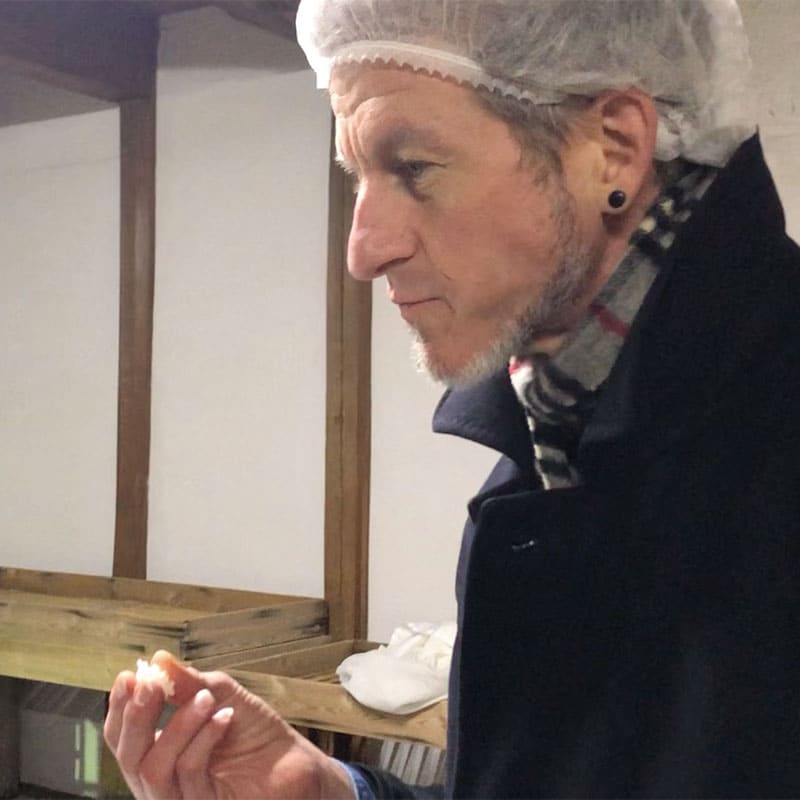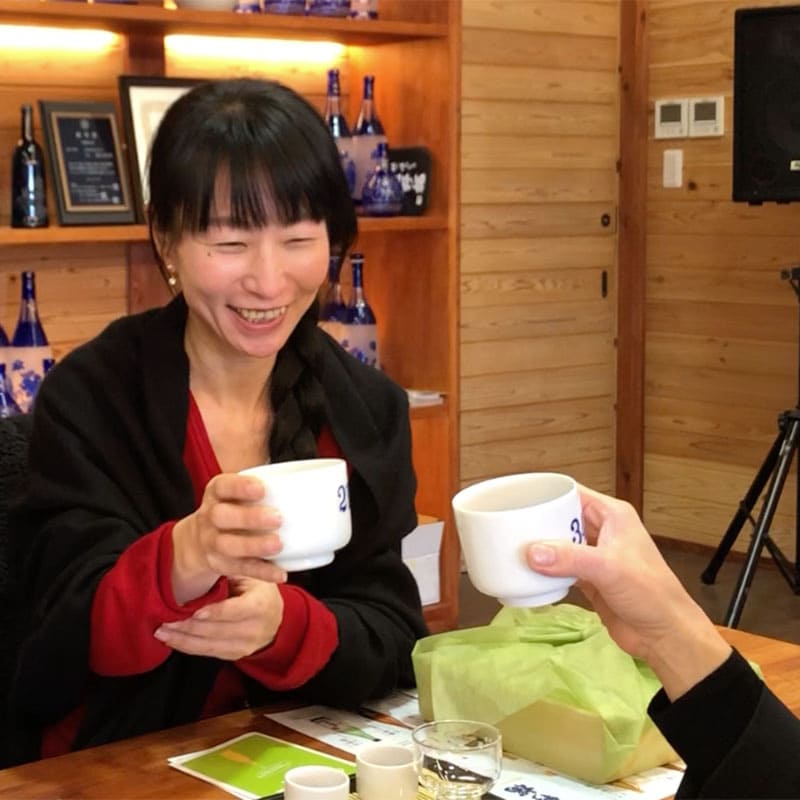Testimonials
Testimonials
Brian (Canada) | Yamano Shuzou, Osaka

I recently joined a brewery tour at Yamano brewery, located between Osaka and Kyoto. It was a wonderful sensory and eye-opening experience.
I’ve been living in Japan for over 15 years and, even though I’m not a sake connoisseur, I’ve had my fair share of the drink over the past 20 years in both Japan and my home country Canada. I have even visited a couple of other sake brewery’s in the past, but they were nowhere near as thorough as this “Sake Discovery” tour at the Sakagura brewery and this tour brought my appreciation of sake to a whole new level.
Getting there from the nearest station (Katano station) was an easy and pleasant 15-min walk.
The tour was hosted and led by Sakagura president Yamano-san and I was thoroughly impressed with Yamano-san’s in depth knowledge of all the various aspects of sake brewing.
With the help of a friendly interpreter, I learned about Sakagura’s history, some sake history in Japan, and about the chemistry & other finer details involved in the chemistry, creation, and storage of sake. The in-depth explanation of how two simple ingredients, rice and water, can be made into fine sake was certainly a treat I didn’t quite expect.
After some introductions, we received a small presentation and lecture from Yamano-san about the process, conditions, and other details of sake fermentation and brewing.
Then, in a small group, we went through the fermentation facilities where we could actually see fermentation in action. Here we were allowed to climb small ladders to peek into the huge vats and actually see the active fermentation mash bubbling and frothing!! The different fragrances of different batches was also very noticeable and quite pleasant.
From there, we were taken to another large room to see how the sake is refined into a liquid form. We also witnessed how “sake-kasu” is made. (Sake-kasu is a by-product of sake production, like brewing lees, and is considered a kind of Japanese super-food that can be used in soups or in hot beverages, often mixed with ginger.)
 We also saw some other areas where they kept rice-derived ingredients, such as koji, and a temperature controlled fermentation room. We were given small samples of dried koji which was delicious!
We also saw some other areas where they kept rice-derived ingredients, such as koji, and a temperature controlled fermentation room. We were given small samples of dried koji which was delicious!
And after the main tour finished came the best part, lunch with sampling! This is truly a point where words cannot capture the experience.
Lunch was a traditional “bento” (boxed lunch) which included various pickled vegetables, sashimi, sushi, and other delicacies. The bentos were prepared by a local Osaka chef and his team. It stood out as one of the most exquisite bentos I’ve ever tasted.
With the lunch there were various bottles of sake placed on the table for us to freely sample. I had never before experienced such a wide variety of flavors and nuances with regards to sake. The sake varieties ranged from bold to subtle with regards to smoothness, sweetness, dryness, cloudiness, & clearness. A very memorable tasting experience!
As we tasted and drank, certain details and descriptions were explained which included pairing suggestions, batch histories, and even how one batch was taken off the market because it needed to age another couple of years to attain an acceptable quality. The lunchtime conversations were certainly lively, anecdotal, and fun.
It’s an understatement to say I was fascinated by the whole experience and I would highly recommend it for anyone interested in sake and Japanese culture, from novice to expert. President Yamano-san is a great story teller and seems to have an endless wealth of knowledge about sake many other things. I left Sakagura Brewery feeling educated and with a warm feeling due to the friendliness and hospitality of the hosts.
As a side note…
When you come to visit Japan, it might be important to note that in Japanese, the word “sake” basically means ALL alcoholic beverages. What we know as “sake” outside of Japan is actually called “nihon-shu” in Japanese. My first couple of months here, I didn’t know this important detail. Perhaps you can imagine the befuddled expressions I received when I went into local liquor shops and asked in my poor Japanese where they kept the “sake”.
Wooja (Korea) | Yamano Shuzou, Osaka
In February 2024, I visited Yamano Brewery in Katano City, Osaka.
It was not my first visit to a sake brewery, but I enjoyed it and was very amazed. Not only those who are interested in sake, but also those who are interested in fermentation should visit there. You can learn many things. Other than that, I recommend it to anyone who is interested in Japanese craftsmanship and traditional industries. You can see the process of how the rice and water become delicious sake.

The tour was conducted as follows:
1. Yamano is a very small brewery. You can see the commitments and experimental spirit to brew sake while maintaining the traditional way.
2. Before entering the sake brewery/warehouse, there was a mini lecture by President Yamano. It gives us a rough idea of the process of making sake. I felt the president’s passion for sake brewing.
3. After his lecture, we put a hair cap on the head and a plastic cover on the shoes and went into the brewery.
4. When I stepped into the sake brewery room, I found myself wrapped by a sweet scent floating in the cool air.
5. There are no pillars in the brewing warehouse space, and it seemed that the building is supported by ceiling beams. The ceiling is high and it has a nice atmosphere.
6. Sake is placed in a separate tanks for each kind. When I climbed up the ladder and opened the lid of one tank to look inside, I could see the yeast bubbling and hear it making a small bubbie-fizzy sound. Yeast is alive and active!!
7. The flavors of fermentation are different from each barrel. One smelled of melons and another smelled like flowers.
8. During the tour, President Yamano talked about each process. How to polish and steam rice, how the temperature effect making rice koji(malted rice), etc. I learned details about sake brewing and was impressed with the depth of it.
9. They also opened the door and showed us the koji room where koji(malted rice) is grown (there are few sake breweries that show the room). Mr. Yamano let us eat dried koji. It was sweet, crunchy and delicious.
10. The final step is to press the moromi and squeeze out liquid part. Connect the pipe from the tank and put it onto a squeezer. Here, the sake is completed by dividing it into moromi(fermentation mash) and liquid=sake.
11. One notable and special point at this brewery is that sake is extracted drop by drop without squeezing. Patience and waiting is needed.
12. After the tour, there was a tasting event for sake made in this brewery. I enjoyed several kinds such as freshly squeezed one and murky one. Even the dry type sake which has a fruity aroma, Yamano’s products have strong sake-ish rich taste in a very good way.
13. Yamano sells sake directly at the meeting/tasting space. I bought sake lees. It has a subtle fruity scent. I like drinking soy milk shakes with sake lees in it. Delicious drink with a slight sweetness without sugar.(Sake lees are good for your health.)
14. President Yamano was a great story teller. He is like an encyclopedia of sake that would tell you everything about brewing: yeast, rice used for sake, nice way to drink sake, glasses/cups for tasting, Katano-city, the situation of sake breweries all over Japan and the liquor tax law.
15. Fifteen minutes walk from Katano Station. Very easy to get there.
